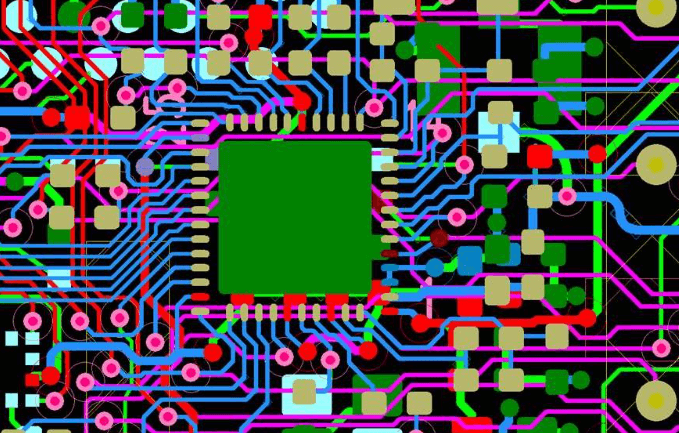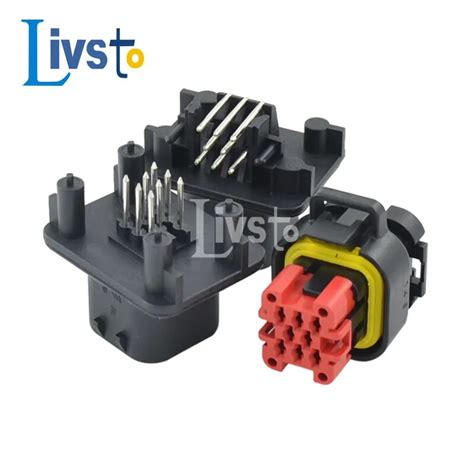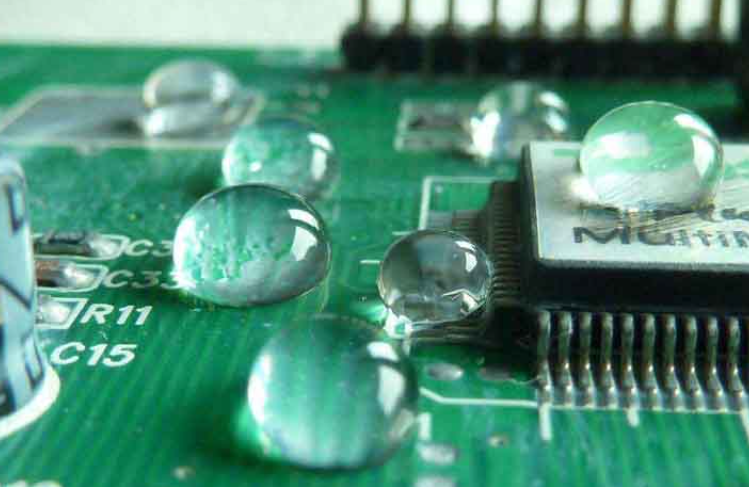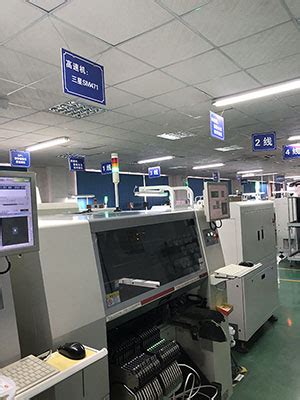Precision PCB Box Build Assembly for Seamless Integration
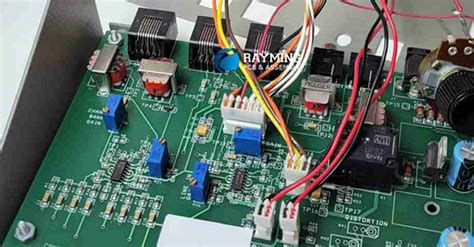
Key Takeaways
When evaluating PCB assembly solutions, understanding the core requirements for industrial, medical, and automotive applications is critical. PCBA processes must align with stringent quality standards, such as ISO 13485 for medical devices or IATF 16949 for automotive systems, ensuring compliance with industry-specific regulations. Scalability remains a priority—modular PCB enclosure designs enable seamless upgrades, while precision-engineered layouts minimize signal interference in high-density environments.
Tip: Prioritize suppliers offering design-for-manufacturability (DFM) reviews early in the prototyping phase to avoid costly revisions during full-scale box build assembly.
Robust system integration relies on harmonizing PCB assembly with mechanical enclosures, connectors, and thermal management components. For industrial automation, this means optimizing for vibration resistance and extended temperature ranges, whereas medical devices demand rigorous sterilization compatibility. Advanced PCBA techniques, such as conformal coating and automated optical inspection (AOI), further enhance reliability across these sectors. Transitioning between design stages requires clear documentation—from schematic reviews to final testing protocols—to maintain alignment with project timelines and performance benchmarks.

PCB Box Build Industrial Solutions
Industrial applications demand PCB assembly solutions that withstand harsh environments while maintaining operational precision. Modern manufacturing systems rely on box build assemblies to integrate high-density circuitry with robust enclosures, ensuring protection against contaminants, vibrations, and temperature fluctuations. Specialized PCBA processes incorporate industrial-grade components, such as power regulators and communication modules, tailored for automation, robotics, and heavy machinery.
A critical advantage lies in scalable design frameworks, which enable seamless adaptation to diverse industrial requirements—from single-unit prototyping to mass production. Advanced PCB box build systems prioritize modular layouts, simplifying maintenance and future upgrades without disrupting production lines. Compliance with standards like IPC-A-610 and ISO 9001 ensures consistent quality, while rigorous testing protocols validate performance under extreme conditions.
Transitioning from design to deployment, end-to-end assembly services streamline workflows by combining PCB assembly with mechanical integration, reducing time-to-market. For industries like energy or logistics, this approach minimizes electromagnetic interference (EMI) risks and optimizes thermal management within enclosures. By aligning PCBA expertise with industrial demands, manufacturers achieve reliable, interoperable systems that drive operational efficiency across sectors.
End-to-End PCB Assembly Services
Modern PCB assembly processes demand rigorous coordination across design, component sourcing, and final integration. End-to-end PCBA solutions streamline production by unifying these stages under a single workflow, minimizing delays and ensuring consistency from prototyping to volume manufacturing. Critical steps include design validation, automated pick-and-place assembly, and comprehensive functional testing.
| Stage | Key Activities | Industry Applications |
|---|---|---|
| Design Validation | Schematic review, DFM analysis | Industrial controls, IoT devices |
| Component Sourcing | BOM optimization, vendor qualification | Medical diagnostics, automotive |
| Assembly & Testing | SMT assembly, AOI, thermal stress testing | Aerospace, consumer electronics |
By integrating PCB assembly with enclosure fabrication and system-level testing, manufacturers achieve seamless interoperability between boards, wiring, and mechanical housing. Advanced PCBA providers leverage scalable workflows to accommodate rapid design iterations, particularly for high-reliability sectors like automotive or medical devices. This holistic approach reduces time-to-market while maintaining compliance with ISO 9001 and IPC-A-610 standards.
Transitioning to full-system integration, the next phase focuses on optimizing box build assembly for environmental resilience and electromagnetic compatibility—a critical consideration for mission-critical deployments.
Medical Device PCB Integration Guide
Integrating PCB assembly into medical devices demands meticulous attention to regulatory compliance, signal integrity, and environmental resilience. High-density interconnect (HDI) designs are often required to accommodate the compact form factors typical of diagnostic tools and implantable systems. PCBA processes must adhere to ISO 13485 and IEC 60601 standards, ensuring traceability and fail-safe operation in life-critical applications.
A key challenge lies in balancing electromagnetic compatibility (EMC) with thermal management, particularly in devices like patient monitors or infusion pumps. Advanced PCB assembly techniques, such as embedded component placement and conformal coating, enhance durability while minimizing interference. Rigorous testing protocols—including accelerated aging and vibration resistance trials—validate performance under clinical conditions.
For seamless integration, collaboration between PCBA providers and medical engineers is essential during prototyping. This ensures alignment with FDA guidelines and mitigates risks like signal noise or power fluctuations. Additionally, modular designs enable scalability, allowing manufacturers to adapt to evolving requirements without compromising reliability. By prioritizing precision in both design and assembly, medical devices achieve the zero-defect thresholds demanded by healthcare ecosystems.

Automotive Electronics Assembly Standards
The automotive industry demands PCB assembly processes that adhere to stringent quality and reliability benchmarks. From advanced driver-assistance systems (ADAS) to powertrain control modules, PCBA must meet ISO/TS 16949 and AEC-Q100 certifications, ensuring components withstand extreme temperatures, vibrations, and humidity. Manufacturers prioritize zero-defect manufacturing protocols, combining automated optical inspection (AOI) and X-ray testing to detect micro-soldering flaws or misalignments in high-density interconnects.
A critical focus lies in thermal management, where copper-core substrates and conformal coatings protect circuitry from thermal cycling stresses. Additionally, PCB assembly for automotive applications requires traceability across the supply chain, with embedded serialization techniques to track components from fabrication to end-of-life recycling.
To align with evolving vehicle architectures, PCBA designs now integrate flex-rigid boards and EMI-shielded enclosures, balancing space constraints with signal integrity. Compliance with ISO 26262 functional safety standards further ensures fail-safe operation in mission-critical systems. This alignment between precision engineering and regulatory frameworks enables seamless integration of electronics into next-generation vehicles while maintaining long-term durability under harsh operational conditions.

Reliable Box Build System Integration
Effective PCB box build assembly requires meticulous coordination between PCBA processes and mechanical enclosure integration. By combining precision-machined components with optimized PCB assembly workflows, manufacturers ensure seamless compatibility between electronic subsystems and their physical housing. This approach minimizes signal interference, thermal stress, and mechanical vibration risks – critical factors in industrial automation and medical imaging equipment.
Advanced box build solutions employ modular design principles, allowing for rapid reconfiguration of PCBAs during prototyping or volume production. Automated optical inspection (AOI) systems verify solder joint integrity before enclosure sealing, while conformal coating enhances durability in harsh environments. For automotive applications, this integration process adheres to ISO 26262 functional safety standards, ensuring fail-safe operation across temperature extremes.
The synergy between PCB assembly expertise and mechanical engineering achieves first-pass success rates exceeding 98% in complex systems. Cross-functional teams validate cable routing paths, connector alignment, and EMI shielding effectiveness through 3D modeling and physical mockups. This end-to-end methodology not only accelerates time-to-market but also establishes a foundation for scalable upgrades as technical requirements evolve.
Scalable PCB Enclosure Design Strategies
Designing enclosures for PCB assembly requires balancing adaptability with structural integrity, particularly when systems must scale across diverse applications. A key consideration is modularity—enclosures should accommodate varying board sizes, component densities, and thermal profiles without compromising mechanical stability. For instance, PCBA layouts in industrial automation often demand ruggedized housings with standardized mounting points, while medical devices prioritize compact, lightweight designs for portability.
Thermal management remains critical in scalable designs, as heat dissipation needs shift with system complexity. Integrating passive cooling features (e.g., vented panels) or active solutions (e.g., fan mounts) ensures consistent performance across scaled configurations. Material selection also plays a pivotal role; aluminum alloys offer durability and EMI shielding, while polycarbonate blends provide cost-effective corrosion resistance for automotive environments.
To future-proof enclosures, engineers leverage universal design frameworks that support iterative upgrades. This includes pre-machined slots for additional connectors or sensor modules, as well as tool-less access panels for maintenance. Collaboration between PCB assembly teams and mechanical engineers early in the design phase minimizes rework, ensuring enclosures align with PCBA specifications and application-specific compliance standards (e.g., IP ratings, vibration resistance). By prioritizing scalability, manufacturers reduce time-to-market and enhance cross-industry compatibility.
Precision Engineering for Seamless PCBs
Achieving seamless integration in modern electronic systems demands precision engineering at every stage of PCB assembly. By combining advanced PCBA processes with meticulous design validation, manufacturers ensure that complex circuitry aligns perfectly with mechanical enclosures and external interfaces. Critical tolerances in component placement, thermal management, and signal integrity are rigorously maintained to eliminate compatibility issues during system integration.
A key advantage of optimized PCB assembly lies in its ability to harmonize mixed-technology components—from surface-mount devices (SMDs) to through-hole connectors—within constrained spatial configurations. This precision becomes particularly vital in applications requiring high-vibration resistance or extended thermal cycles, where even micron-level deviations can compromise performance. Advanced PCBA workflows leverage laser-cut stencils and 3D modeling software to validate fitment before prototyping, reducing iterative delays.
Moreover, the interplay between PCB assembly and enclosure design requires material-aware engineering. For instance, selecting substrates with matched coefficients of thermal expansion (CTE) prevents warping in temperature-sensitive environments. Automated optical inspection (AOI) systems further enhance accuracy by detecting micro-scale soldering defects that could disrupt electrical pathways. By embedding these practices into scalable production frameworks, engineers deliver solutions that maintain functional coherence across industrial, medical, and automotive ecosystems—laying the foundation for reliable, end-to-end system integration.
Custom Electronics Box Build Techniques
Effective PCB assembly for custom electronics box builds requires a meticulous balance of design flexibility and technical precision. Central to this process is the integration of PCBA (printed circuit board assembly) with mechanical enclosures, ensuring both electrical performance and physical robustness. Engineers prioritize design specifications that align with application-specific demands, such as thermal management, electromagnetic interference shielding, and ingress protection ratings.
Advanced techniques include modular layouts to accommodate future upgrades, as well as laser-cut paneling for precise component alignment. Material selection plays a critical role—aluminum enclosures, for example, offer durability and heat dissipation for high-power PCB systems, while polymer housings are ideal for lightweight, corrosion-resistant applications. Automated optical inspection (AOI) during PCBA integration verifies solder joint integrity and component placement accuracy, reducing post-assembly failures.
Moreover, iterative prototyping enables validation of mechanical-electrical interfaces, ensuring seamless compatibility between PCB assembly and peripheral subsystems. By adopting scalable workflows and adhering to industry-specific certifications, manufacturers can deliver tailored solutions that meet rigorous performance and reliability benchmarks.
Conclusion
In modern electronics manufacturing, the convergence of PCB assembly and PCBA processes forms the backbone of reliable system integration. As industries demand increasingly sophisticated solutions, the ability to deliver precision-engineered enclosures with seamless compatibility becomes paramount. By leveraging advanced PCB box build assembly methodologies, manufacturers can ensure that complex systems meet rigorous performance criteria across industrial, medical, and automotive environments.
The integration of scalable design strategies with robust PCBA workflows not only accelerates time-to-market but also enhances long-term adaptability. For instance, customized electronics box builds that align with ISO-certified standards demonstrate how tailored approaches address sector-specific challenges—from thermal management in automotive modules to sterilization compliance in medical devices.
Ultimately, the success of PCB assembly projects hinges on a holistic view of system architecture, where mechanical, electrical, and software components operate as a unified entity. By prioritizing end-to-end quality assurance and iterative testing protocols, manufacturers can deliver solutions that evolve alongside technological advancements, ensuring durability and performance in even the most demanding applications.
FAQs
What distinguishes PCB assembly from full box build services?
While PCB assembly (PCBA) focuses on populating and soldering components onto the board, box build encompasses the complete integration of PCBs, wiring, enclosures, and mechanical parts into a functional system.
How do you ensure compliance with medical or automotive standards?
Our PCBA processes adhere to ISO 13485 for medical devices and IATF 16949 for automotive systems, with rigorous testing for shock resistance, temperature tolerance, and EMI shielding to meet industry-specific requirements.
Can custom enclosures be designed for specialized applications?
Yes, we combine precision PCB assembly with tailored enclosure design, optimizing layouts for thermal management, IP ratings, or form-factor constraints while maintaining scalability for future upgrades.
What testing protocols are used for seamless integration?
Every unit undergoes automated optical inspection (AOI), in-circuit testing (ICT), and system-level validation to ensure electrical performance and mechanical stability before deployment.
How does your service support low-volume prototyping?
We offer flexible PCB assembly workflows, from prototype builds with rapid turnaround to full-scale production, ensuring consistent quality across batches through DFM (Design for Manufacturing) analysis.
Ready to Streamline Your Electronics Integration?
For expert PCBA and box build solutions tailored to your project’s needs, please click here to explore our end-to-end capabilities.


